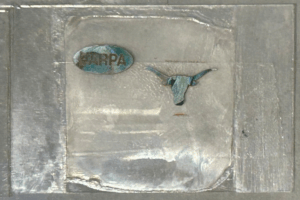
AUSTIN, Texas — Partnering with the New Energy and Industrial Technology Development Organization (NEDO), which acts as a Japanese government agency, The University of Texas at Austin will begin using alternative energy sources to power some of its high-performance computers.
Energy efficiency in data centers is a major focus in the technology industry today, and the program positions Texas as a leader in both the renewable energy and data center industries. It will help promote efficiency among scientists who are using advanced computing technology — and provide new educational and research opportunities for UT Austin students and faculty members in emerging energy systems.
“The world is interconnected, and it is vital for us to partner internationally,” said Gregory L. Fenves, president of UT Austin. “This project is urgently needed. We are ever more dependent on data, and at the same time, ever more conscious of the need to utilize all sources of energy. This important project helps meet those two great needs while engaging our students and faculty in groundbreaking research.”
Specifically, the partnership will install and test key components of an efficient, high-voltage direct current (HVDC) data center infrastructure and a new solar farm at UT Austin’s Texas Advanced Computing Center (TACC) at the J.J. Pickle Research Campus in North Austin.
Texas Secretary of State Carlos Cascos and NEDO Executive Director Fumio Ueda on Tuesday signed a memorandum of understanding relating to cooperation regarding energy efficiency at computer data centers in Texas, including the dissemination of HVDC Feeding Systems. At the same time, UT Austin’s Fenves and NTT FACILITIES INC. Senior Executive Vice President Atushi Ichihoshi signed an implementation document. (NTTF has been contracted for the work by NEDO.)

NEDO, which is Japan’s largest public research and development management organization, will be the primary funder, investing $13 million in equipment, personnel and construction costs into the project. The university also plans to use a combination of federal and industry funding during the course of the program to take full advantage of the research and educational opportunities it provides.
“NEDO is pleased to conclude this memorandum of understanding with the secretary of state of Texas regarding high-voltage direct current feeding technology at the Texas Advanced Computing Center of The University of Texas at Austin,” said Ueda. “Through this project, we hope to verify the energy efficiency of the new technology and to disseminate it in the U.S.”
“We are very pleased and honored to have the opportunity to work with Texas Advanced Computing Center at UT Austin.” said Ichihoshi of NTTF. ”We think that it is of great significance to be able to proceed with the site demonstration in this high-tech region as a data center. Therefore, we are confident that constructing and promoting this large-scale HVDC system will have a significant impact on future development in the U.S.”
Construction is expected to begin this fall, and a one-year demonstration project will launch after construction is completed.
“I’m honored to participate in this ceremony with The University of Texas, my alma mater, and Japan,” Cascos said of the signing ceremony. “The State of Texas and Japan share not only a strong relationship but also mutual interests in energy and technology. Today’s agreement will help expand and strengthen our diplomatic and economic ties.”
This project also consists of about $4 million worth of new computing capability, coupled to an HVDC power distribution system and the new solar farm to provide solar power when possible. The project uses DC power rather than AC power to supply the computer equipment and data center, avoiding costly AC to DC conversions at the solar panels, the battery backup system and the computing equipment racks. This installation will give UT Austin researchers operational data needed to support their discovery of innovative approaches to further improving tomorrow’s data center efficiency.
The solar farm and HVDC equipment will then become a permanent part of TACC’s data center infrastructure.
The center designs and operates some of the world’s most powerful computing resources. Currently, more than 3,000 active, funded research projects in all fields of science benefit from the advanced computing resources available at TACC, enabling researchers to discover new drugs, develop renewable energy sources and visualize the explosion of a star, among many other important discoveries.
“Energy efficiency is a big problem for the entire IT industry, but particularly in high-performance computing, where the world’s leading systems can draw tens of megawatts of power,” said Dan Stanzione, executive director of TACC. “This partnership will not only incorporate a renewable energy source into the power mix for our data center; it will allow us to explore the additional efficiencies HVDC can offer by removing needless conversions from AC to DC and back again that happen in most data centers today. We look forward to working with both NEDO and NTTF to demonstrate a new generation of data center technologies.”
After site visits at several locations in the United States and in Texas, NEDO and NTTF selected The University of Texas at Austin for this project.
NEDO has also developed projects in related technology areas in three other U.S. states. In Hawaii, the project demonstrated energy management systems for the electric grid. In New Mexico, NEDO worked with Los Alamos National Laboratory on a smart home demonstration. In New York, the project was with the State University of New York to achieve net zero energy use in a nanotechnology research building.




